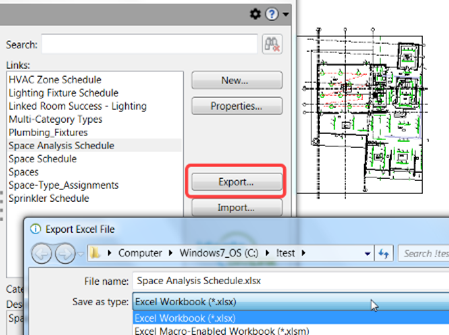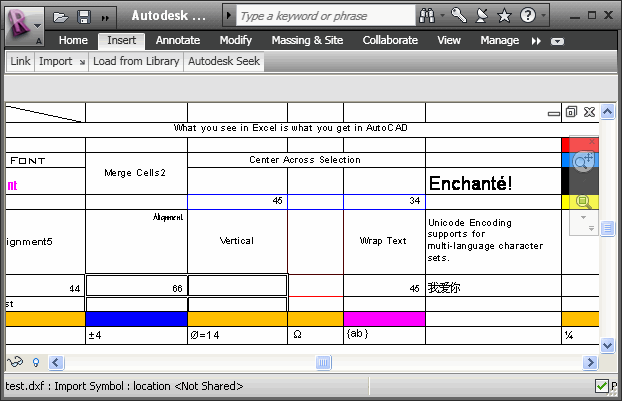Excel Empowerment: Supercharge Your Revit Projects With Seamless Information Import
Are you wanting to supercharge your Revit tasks? With smooth data import, Excel empowerment can be the key to opening your task's complete possibility. Visualize simplifying the import process and taking full advantage of effectiveness through seamless data combination. In this short article, we will share suggestions and tricks for utilizing Master your Revit tasks. Discover exactly how harnessing the Excel-Revit connection can bring about success in your jobs. Get all set to take your Revit jobs to the following degree with Excel empowerment.
The Power of Excel in Revit Projects
You can supercharge your Revit tasks by utilizing the power of Excel for smooth data import. Excel is a versatile tool that can significantly improve your operations and performance in Revit (revit tool). With Excel, you can easily import and handle huge amounts of information, saving you time and initiative
One of the essential benefits of making use of Master Revit is its ability to deal with complicated calculations and solutions. You can use Excel to do estimations on your information, such as generating amounts, calculating expenses, or assessing efficiency. When functioning with huge tasks that need considerable estimations., this can be specifically valuable.

Furthermore, Excel gives a familiar and straightforward user interface for working with data. You can organize and adjust your information in a spread sheet format, making it easy to view and edit. When teaming up with others or when you need to make fast adjustments to your project information., this can be particularly handy.
Furthermore, Excel permits you to easily import and export information between Revit and other software application applications. You can import information from external resources into Revit, such as material requirements or devices schedules, and export data from Revit to Excel for additional evaluation or coverage.
Streamlining Information Import With Excel in Revit
Streamlining information import in Revit comes to be much easier when utilizing Excel as a tool. With Excel, you have the power to perfectly import and manage huge amounts of data in your Revit projects. By using the familiar user interface and capability of Excel, you can save time and increase effectiveness in your process.
One of the crucial benefits of making use of Excel for information import in Revit is the capacity to quickly arrange and adjust information before importing it into your job. With Excel's effective functions, such as arranging, filtering, and solutions, you can quickly cleanse up and format your data to fulfill the needs of your Revit project.
In addition, Excel permits you to import data from numerous sources, such as databases, spread sheets, or perhaps web-based applications. This versatility offers you the flexibility to gather information from different systems and consolidate it into one main location for simple accessibility and administration.
Furthermore, Excel provides the choice to create personalized design templates for information import in Revit. By developing templates tailored to your project's specific requirements, you can guarantee consistency and precision in your information import process.
Overall, using Excel as a tool for data import in Revit enhances the process and boosts your efficiency. Why not take benefit of this effective tool and supercharge your Revit projects with smooth information import making use of Excel?
Making The Most Of Efficiency With Seamless Data Combination
Make the most of performance by flawlessly incorporating and handling data in your process. Gone are the days of manually inputting data right into your system, squandering valuable time and sources. With seamless information assimilation, you can simplify your processes and supercharge your efficiency.

When you have a seamless integration system in location,Taking care of information becomes a breeze. You can conveniently arrange and classify your data, making it simpler to retrieve and assess. Say bye-bye to the days of exploring limitless spread sheets for that piece of information you require.

Excel Tips and Techniques for Revit Projects
Additionally, you can use Excel to create personalized design templates for data import and export. This method, you can guarantee consistency and resource accuracy when transferring data between Revit and Excel. Overall, grasping these Excel suggestions and tricks will greatly enhance your capability to manage and adjust data in your Revit tasks.
Utilizing the Excel-Revit Connection for Success
To make the many of your Excel-Revit connection, take benefit of the capacity to easily integrate and transfer job info. By harnessing this powerful connection, you can supercharge your Revit tasks and streamline your process. With simply a couple of basic steps, you can import information from Excel directly right into Revit, conserving you time and ensuring accuracy.
One of the vital benefits of the Excel-Revit connection is the ability to move data seamlessly. Whether you are importing routines, room data, and even geometry information, Excel offers an user-friendly user interface that enables you to arrange and manipulate your data prior to importing it right into Revit. This means you can conveniently update and modify your job information in Excel, and with a few clicks, transfer those adjustments straight right into your Revit model.
In enhancement to transferring data, the Excel-Revit link also enables synchronization. This implies that any adjustments made in Excel can be automatically upgraded in Revit, guaranteeing that your job information is constantly as much as day. This synchronization feature is specifically helpful when handling complex and big tasks, as it removes the demand for manual data entry and lowers the risk of mistakes.
Conclusion
So there you have it - the power of Master Revit projects you can try these out can not be underestimated. By streamlining information import and making the most of performance through smooth information assimilation, you can supercharge your jobs and attain success. With the Excel-Revit link, you have the tools to take your tasks to the following level and achieve amazing outcomes. So don't wait any type of longer, start harnessing the power of Excel in your Revit projects today and unlock a world of possibilities.
You can supercharge your Revit tasks by taking advantage of the power of Excel for smooth data import. With Excel, you have the power to perfectly import and manage huge quantities of information in your Revit projects (revit tools). Generally, grasping these Excel techniques and pointers will substantially improve your capacity to handle and manipulate data in your Revit jobs
Whether you are importing routines, space data, or even geometry info, Excel provides an user-friendly interface that allows you to organize and control your information before importing it right into Revit. By streamlining data import and making best use of performance through seamless data integration, you can supercharge your jobs and accomplish success.